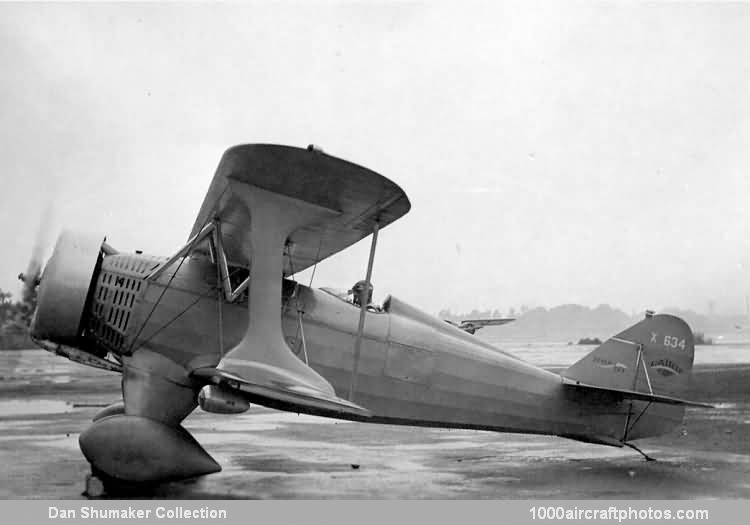The development of the Speedwing series actually stems back to the two Laird-Specials that were flown in contest by Charles "Speed" Holman and E.E. Ballough since 1927; entered in every national competitive event for the past three seasons, these two aircraft were continuously being modified and speeded-up to defy the efforts of competitors, and the record hung up by these two sensational airplanes is quite remarkable. Desires voiced from several sportsman-pilots on the possibility of owning and flying comparable aircraft, led to the development of the Laird Speedwing series; the Speedwing was first introduced as the Wright J5 powered LC-R200, and later it was being offered as the improved model LC-R300.
The LC-R300 was a three-seat open cockpit biplane of high performance that was leveled at the sportsman-pilot, a breed of man who would appreciate and enjoy an airplane that had the heart of a thoroughbred, with a performance and muscle to match. The LC-R300 normally carried three, but the front cockpit could be covered off with a metal panel when not in use, to gain several miles per hour in available cruising speed.
With the ability to carry a fair-sized payload and the fuel capacity for a high cruising range, the LC-R300 was ideal for long cross-country jaunts and was usually fitted with the very best in navigational and flight instruments. Being an airplane of almost special-purpose category, the LC-R300 was custom-built to customer's order and consequently, only a small number were built. Those few that were built, were a shining beacon for Laird performance and quality; with E.M. Laird, quality and performance had become a well-earned tradition. The LC-R300 remained in development into the 1930s and the latest versions were considerably improved with NACA type low drag engine cowlings and much better streamlining throughout as shown; no doubt borrowing from valuable experience gained with the famous Laird Solution and Super Solution racing biplanes.
The fuselage framework was built up of duralumin tubing with special steel clamps to make the joints, and braced in an X truss with heavy steel tie-rods; the framework was heavily faired to a deep streamlined shape and fabric covered. The later model with the NACA cowling was covered in metal panels to the rear of the pilot's cockpit. The large fuel tank was mounted high in the fuselage just ahead of the front cockpit, with a direct-reading fuel gauge projecting through the cowling; a baggage compartment of some 50 lb (23 kg) capacity was in the turtle-back section of the fuselage, in back of the rear cockpit. On the later models, another compartment was added just below.
The wing framework was built up of heavy-sectioned laminated spruce spar beams, with spruce and plywood built-up wing ribs that were closely spaced together for added strength and to preserve the airfoil form across the span; the leading edges were covered and the completed framework was fabric covered. There were four ailerons that were connected together in pairs by a streamlined push-pull strut; the distinctive looking I-shaped wing struts were of a laminated plywood sandwich that was shaved and shaped to a streamlined form.
The fabric covered tail group was built up of welded chrome-moly steel tubing, except for the horizontal stabilizer which was built up of wood spars and ribs on the earliest models; the fin was ground adjustable and the horizontal stabilizer was adjustable in flight. The split-axle landing gear of 84 in (2.13 m) tread was of the normal type as used by Laird, and used two spools of rubber shock-cord to absorb the bumps; the later models used oleo-spring shock absorbing struts. The tail-skid was of the spring-leaf type; wheels were 30x5 and Bendix brakes were standard equipment. Custom colors were available and the quality of the finish on the LC-R300 was about the finest to be seen anywhere. A metal propeller, navigation lights, and inertia-type engine starter were standard equipment.
The type certificate number for the LC-R300 as powered with the 300 hp Wright J6, was issued in July of, 1929 and some six or more examples of this model were manufactured by the E.M. Laird Airplane Co. at Chicago, Illinois. The Laird airplane factory was just a short way from the airfield, and manufactured assemblies were trucked to the field for final assembly and flight test. Emil Matthew Laird was the president; Lee Hammond was V.P. and sales manager; with these engineers presiding over the engineering department at different times in the following order: Raoul J. Hoffman, Charles Arens, and R.L. Heinrich."
